All issues

Successor
Volume 38, Issue 2
Displaying 1-3 of 3 articles from this issue
- |<
- <
- 1
- >
- >|
-
Report 2: Serological reactions, especially hemagglutination inhibition test (HI) and complement fixation test (CFT) in patients with Japanese B EncephalitisTadanobu HATTORI1964 Volume 38 Issue 2 Pages 33-43
Published: May 20, 1964
Released on J-STAGE: November 25, 2011
JOURNAL FREE ACCESSSero-immunological investigations were carried out with 74 patients suffering from Japanese B encephalitis admitted in Kyoto Municipal Hospital and 79 healthy persons during 3 years, from 1960 to 1962.
1) It was observed that HI titer increased about four times at the end of the first week of the disease and climbed up to maximum point of titer at the second or the third week of the disease.
2) There were two groups with normal distribution curve of HI titer, one of which had the peak at 1: 160 and another at 1: 1280 after the fourth week of the disease.
3) In many cases, CFT titer increased four times at the second week of the disease and climbed up to the maximum point of the titer at the fifth and sixth week of the disease on an average.
4) HI titer was lower in severe cases and aged patients over 51 years old and also the titer decreased in them in convalescense.
5) Early appearance of CFT and its high titer were observed in mild cases.
6) Evidently low HI titer was observed in fatal cases.
7) There were significant differences in vicissitude of HI titer according to virus strains used.
8) Positive HI titer at over 1: 10 was observed in 19.0 percent of healthy persons before the epidemic of the disease but no healthy persons with HI titer over 1: 80 were observed.View full abstractDownload PDF (1280K) -
Shigehiro KATSURA, Tomoo KAINUMA1964 Volume 38 Issue 2 Pages 44-51
Published: May 20, 1964
Released on J-STAGE: November 25, 2011
JOURNAL FREE ACCESSYato-byô(Tularemia in Japan) is found chiefly in the North-East and the Kantô District of Japan. Iwate Prefecture is known as one of the old epidemic areas of Yato-byo since the time when Dr. H.Ôhara reported on this disease for the first time in 1924. However, epidemiological and clinical studies on this disease have not yet been executed systematically in Iwate Prefecture. In July 1962 authors carried out epidemiological surveys in Takizawa village in this prefecture, chiefly by applying the skin test. The antigen for the skin test of Yato-byô had been prepared in ôhara Laboratory. Now, in 14 out of 240 cases, i.e. in 5.8% of the cases this reaction came out positive. The rate was almost as high as the rates of other districts in Iwate Prefecture, was lower than those of old, densely contaminated areas in Fukushima Prefecture, and higher than those of slightly contaminated areas in Niigata Prefecture.
In the next place, authors examined the data of 54 patients of Yato-byô, who had been treated either in our hospital or in various other hospitals in Iwate Prefecture. The patients dated back to 1955 to 1962. Now, the results obtained were as follows: 1) Yatobye.' was found in various areas in Iwate Prefecture. There was no area where especially many patients were found. But in coastal areas a little more patients were found than in the inland areas. This disease showed differences in its annual occurrence. 2) In the seasonal relation it was observed that the outbreak showed its peak in December. 3) All of the cases were caused by the contact with hares. And the mode of infection was for the most part skinning, cooking and eating. 4) Yato-byo was found more in male than in female. The occupation of the patients was mostly farmer. The age was most frequently of 20 - 49 years. 5) Among the 54 patients 39 were of glandular, and 8 of ulceroglandular type. Other cases were of typhoid, tonsilloglandular and oculoglandular type. 6) The incubation period of the cases was for the most part within a week. 7) The symptoms of the beginning stage of the disease were swelling of lymph nodes, fever, chillness, headache etc. 8) As for the treatment, 22 cases weer treated solely with antibiotics, while 31 cases were treated surgically but togethre with antibiotics of which streptomycin was the essentials.
On the whole, Iwate Prefecture may be regarded as a moderately contaminated tdistrict of Yato-byô.View full abstractDownload PDF (1035K) -
1964 Volume 38 Issue 2 Pages 55-56
Published: May 20, 1964
Released on J-STAGE: November 25, 2011
JOURNAL FREE ACCESSDownload PDF (245K)
- |<
- <
- 1
- >
- >|